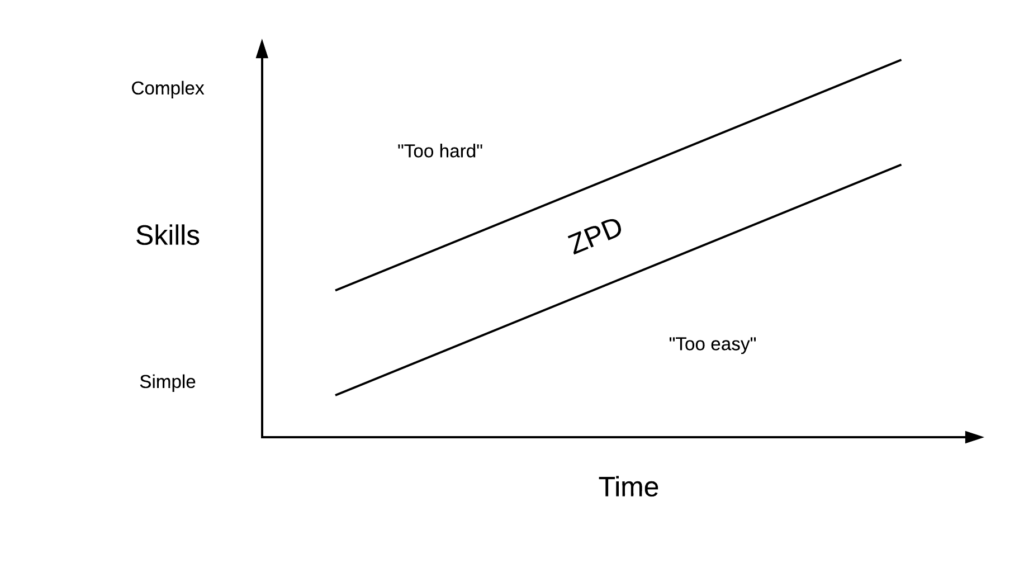Lev Vygotsky was a Russia psychologist who worked in the early part of the 20th century before he died at 38. Many educators who adopt methods that are commonly called constructivist ground their pedagogy in ideas he developed. One that is particularly useful in designing all curriculum is the Zone of Proximal Development.
I often share the image below with colleagues when we are thinking about ZPD and curriculum design:

On the y-axis we see increasing “difficulty” of skills or knowledge. Obviously, this is an arbitrary measure in many cases, but most educators can recognize lessons as being more or less difficult than others, and students can recognize them as well. Along the x-axis we plot time.
In my conception of ZPD, at any time we can differentiate the skills we are teaching into three groups. Some fall below the ZPD on my graph; we can expect students to solve problems at this level with independence. Some fall above the ZPD; we can expect these to be beyond the capacity of students, so they will be unable to solve these.
Those that fall within the ZPD are within the capacity of students, but only with assistance. For Vygotsky, the assistance is social interaction and in the work of solving these, we see the development we call learning. The social interaction required for developing in the ZPD can comes from teachers but also from discussion or collaboration with peers. As educators have become more skilled at designing with ZPD in mind, graphic and other scaffolds and now video-based tutorials or worked examples provide the support to help students learn to solve problems in the ZPD.
Over time, we see the ZPD “goes up.” We expect more complex problems to pass from “too complex” into the ZPD and then into “too easy” on my graph.
There are important implications of ZPD on curriculum design:
- ZPD is largely an individual phenomenon–What falls into one student’s ZPD may be “too easy” for some and “too hard” for others. ZPD helps teachers to remember each student is an individual and deserves experiences in his or her ZPD as this is where learning occurs.
- The supports that help students solve problems in the ZPD are many–Teachers, peers, and materials can all facilitate learning in these problems. The effective teacher provides students with experience with supports from al three.
- ZPD is a dynamic and context-dependent phenomenon–We keep problems in the “too easy” section of my graph with practice (how may can still find the first derivative of a function?); by designing curriculum to provide on-going practice using essential skill, we assure what has been learned stays learned (for as long as we can… the cognitive loss is inevitable as those of us who have reached a certain age can tell). We can also assure what is learned stays learned by giving students experience applying it to different situations and contexts.